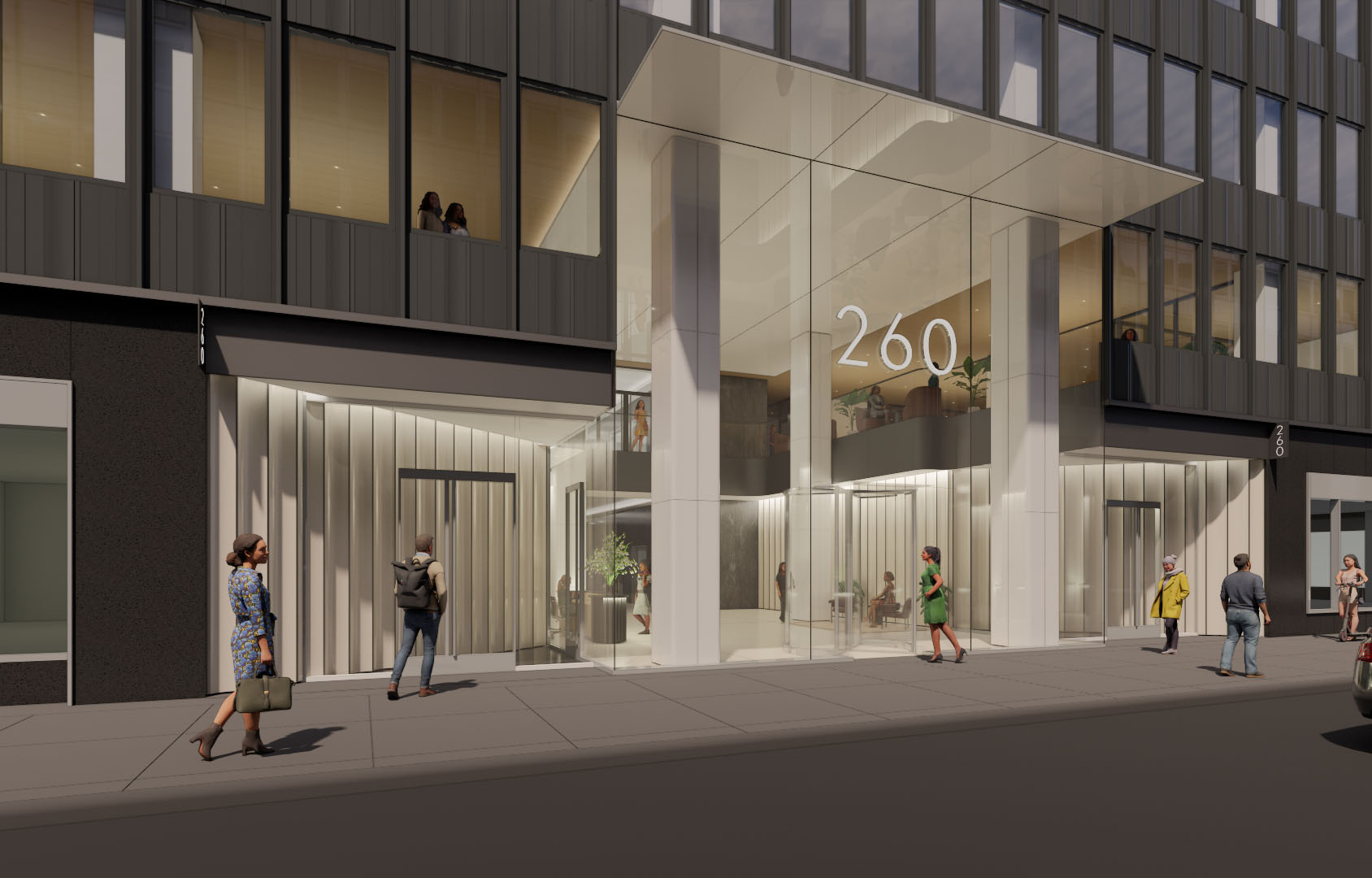REBNY issues joint safety guidelines with industry unions and organizations
New York, NY The Real Estate Board of New York (REBNY), 32BJ SEIU, Realty Advisory Board on Labor Relations, Inc., (RAB), Local 94 International Union of Operating Engineers, AFL-CIO, and the Building Owners & Managers Association of Greater New York (BOMA-NY), jointly issued the city’s most comprehensive guidelines to facilitate the safe and healthy reentry into commercial office buildings. These guidelines follow the state’s issuance of commercial building safety practices and will help owners, managers and building workers comply with state guidance.
The coalition created the comprehensive Best Practices for Reentering Commercial Buildings in Phase Two of New York Forward to help ensure protection of office tenants, building service workers, visitors and the general public as the economy begins to restart economic activity. The guidelines will arm building owners and property managers with concrete strategies based on the recommendations of governmental and public health authorities, including the Centers for Disease Control and Prevention (CDC), the New York State Department of Health and the New York City Department of Health.
These recommendations from both the real estate industry and labor groups consider the unique realities of the NYC workplace and provide specific examples that illustrate how property owners and building managers can properly execute and comply with public health and governmental guidelines.
A summary of some of the coalition’s key guidelines for safely reentering offices in the city include:
- Test all mechanical, electric and plumbing systems. Prior to reentry, office buildings should test and ensure the safe operation of systems used less frequently during New York On Pause, including heating and cooling systems, elevators, fire protection systems and plumbing.
- Prepare public and common areas for social distancing. Office buildings should employ social distancing in public and common areas to ensure at least six feet of distance at building entrances and exits, security check-ins, elevators, loading docks, restrooms and other public areas.
- Promote good hygiene. Office buildings should ensure hand cleaning stations are readily available throughout the public areas of the building and that they include either soap, water, paper towels and touchless trash, or hand sanitizer with at least 60% alcohol.
- Post signage detailing new protocols. Office buildings must post signs describing new protocols, physical designations and health guidelines throughout the building.
- Stock up on supplies. Office buildings should secure a range of supplies to support the safe reentry of tenants, which may include cleaning supplies, personal protective screens and partitions for building service workers or personal protective equipment, such as masks and gloves.
- Revise public health protocols to support the health and safety of office building service workers. Office buildings will need to take steps to ensure building workers stay safe on the job, including providing appropriate PPE, training workers on new protocols, conducting health screenings, and notifying workers of cases in the building.
- Coordinate and communicate with office tenants. Office building mangers should designate a point person for each tenant and survey tenants about their return-to-work plans. Owner and tenant coordination will be vital to a safe and health reentry process, including to facilitate contact tracing.
- Clean often and thoroughly. Office buildings should increase cleaning and disinfection procedures in public areas of buildings using protocols established by the CDC and New York City Health Department, which recommend disinfecting frequently touched surfaces such as doors, elevators, elevator buttons, stairwells, toilets, faucets and sinks.
- Wear a face covering. Require anyone entering an office building to wear face coverings in all public and common areas of the building, including lobbies, elevators and stairs.
- Conduct daily health screenings. Office buildings will need to be prepared to conduct daily health screenings of their workers and coordinate with tenants to, if appropriate, set aside space in building entry areas for screenings to take place.
“Like all New Yorkers, I am thankful for the heroic work our healthcare professionals, building service workers and other essential personnel did over the past three months to keep our City safe and our people healthy. We must honor their hard work and the lives they saved by remaining vigilant of public health recommendations and requirements,” said REBNY president James Whelan, who also serves on both the governor Cuomo’s New York Forward Reopening Advisory Board and mayor de Blasio’s Reopening Advisory Council for the Construction and Real Estate Sector. “New Yorkers always get back up when we are knocked down and these guidelines will help us do that by showing the world yet again that New York City is a healthy and safe place to live, work, invest and entertain.”
“We are pleased to work closely with REBNY on some of the most comprehensive reopening guidelines in the country. These guidelines were carefully designed to protect the health of building service workers and the public with stringent cleaning, maintenance, security and social distance protocols,” said Kyle Bragg, president of 32BJ SEIU. “Cleaners, doorpersons, supers, porters, security officers and all building service workers are central to the safe operations of buildings and facilities throughout every sector of our economy, which is why they have been deemed “essential workers.” Ensuring that this highly trained workforce is recalled in sufficient numbers will be important to securing public trust in the process of economic reopening. By supporting essential building service workers, we protect everyone in our community.”
“Safely reopening New York’s commercial office buildings is critical to our region’s economic future,” said Howard Rothschild, president of the Realty Advisory Board on Labor Relations. “We are proud to put forward these comprehensive guidelines, which are a direct result of our close collaboration with 32BJ and Local 94 throughout this pandemic, for the safety and health of employees, tenants, visitors and the general public.”
“After some 80 days of illness, heartache and isolation we are all excited to return to our buildings. We also know that we must continue to be both diligent and cautious so as to observe recommended social distancing while at work both for ourselves, our loved ones and everyone we encounter in our buildings,” said Kuba Brown, business manager/financial secretary IUOE Local 94. “Local 94 is pleased to have helped develop these guidelines which represent our industry’s best efforts to not only ensure a productive and efficient workplace but, most importantly, a safe workplace as well.”
“New Yorkers united as we all sheltered in place for more than two months. As the outbreak of COVID-19 subsides, it is imperative that we continue to band together and follow the same set of guidelines for reentering commercial office buildings,” said Hani Salama, chair and CEO of BOMA New York. “Together with the industry’s leading minds, BOMA New York carefully prepared the strategies to begin repopulating workspaces throughout New York. Our continued collaboration will ensure our collective safety and maximize productivity.”
Download the coalition’s complete Best Practices for Reentering Commercial Buildings in Phase Two of New York Forward by CLICKING HERE. You can also download the New York State’s Interim Guidance For Commercial Building Management During the Covid-19 Public Health Emergency by CLICKING HERE. These and other resources for the real estate industry related to the Coronavirus pandemic are available on REBNY’s Coronavirus Resource Hub website.
REBNY created its Coronavirus Resource Hub in March 2020 to provide a dedicated and centralized source of information to help individuals and businesses navigate the rapidly changing business climate during the Coronavirus crisis. The resource hub provides trusted information to support REBNY members, and the real estate industry and the public at large – regardless of membership status in the trade association – with critical details about how to get and give help during the pandemic. For more information about REBNY’s the Coronavirus Resource Hub, please visit go.rebny.com/CoronavirusResources.
New York City began Phase One of the New York Forward Plan June 8, which includes the resumption of nonessential construction and manufacturing, in addition to certain nonessential retail businesses. Under the New York Forward Plan, a region must operate for two weeks in any given phase before proceeding to the next phase. Commercial office buildings as well as office-based tenants are included in Phase Two of the New York Forward Plan.
For more information about reentering commercial office buildings, or for additional REBNY guidelines for brokers and agents, visit go.rebny.com/CoronavirusResources.
AmTrustRE completes $211m acquisition of 260 Madison Ave.


AI comes to public relations, but be cautious, experts say - by Harry Zlokower

Behind the post: Why reels, stories, and shorts work for CRE (and how to use them) - by Kimberly Zar Bloorian

Strategic pause - by Shallini Mehra and Chirag Doshi









.jpg)
.gif)
.gif)